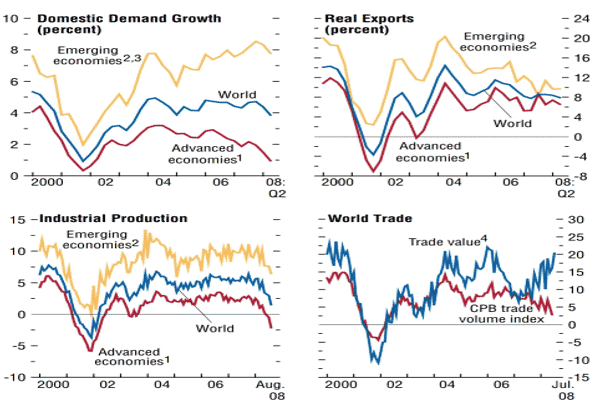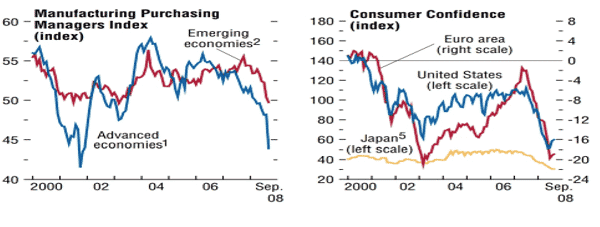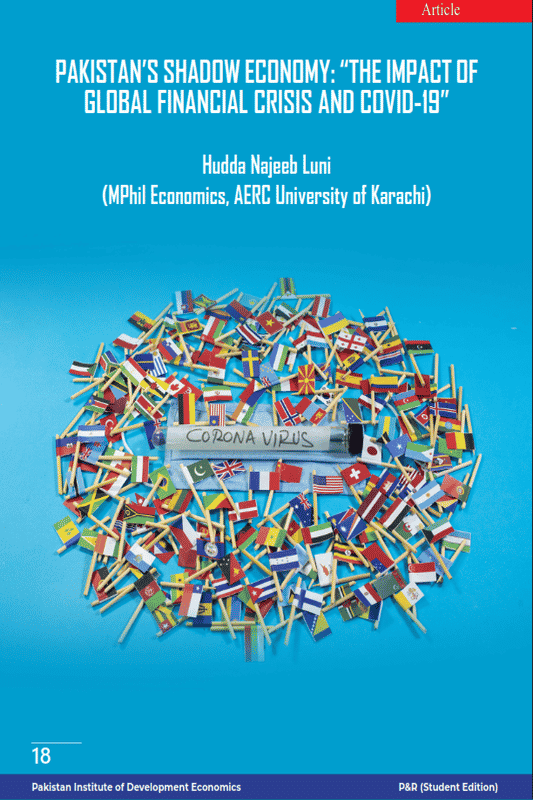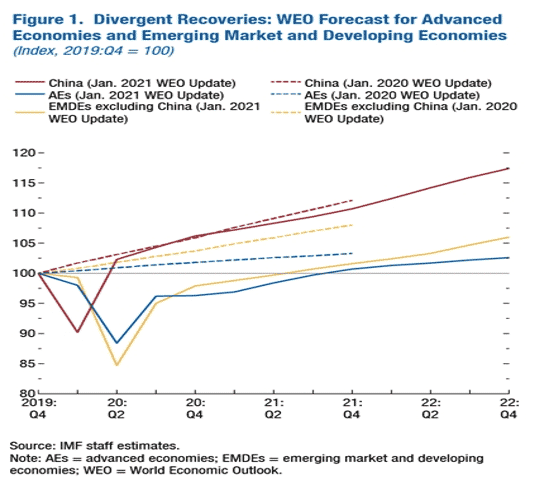
Pakistan Institute of Development Economics
- Home
Our Portals
MenuMenuMenuMenuMenuMenuMenu - ResearchMenuMenuMenuMenuMenuMenuMenu
- Discourse
- The PDR
- Our Researchers
- Academics
- Degree Verification
- Thesis Portal
- Our Portals
Pakistan’s Shadow Economy: “the Impact Of Global Financial Crisis And Covid-19”
Pakistan’s informal economy’s size is estimated to be 56 per cent of the country’s GDP (2019 estimate). Its worth is calculated to be around $180 billion a year, and that is a whopping amount by any measure. (DAWN, 2021)
Despite the unpopular opinion of the policymakers regarding the losses to revenue because of the shadow economy, one cannot defy its role for providing a seedbed for enterprise birth and job creation for many skilled and unskilled labor. According to an ILO report, “Of all the global working population some three billion, nearly two-thirds (1.8 billion) work in the informal economy. Out of these, majority of informal workers are self-employed:70% of all informal workers in Sub-Saharan Africa, 62% in North Africa, 60% in Latin America, 59% in Asia and 77% in the European Union.”
A worldwide interest in the informal economy which began at the start of millennium has ignited numerous debate for its role in the overall economy. It has earned strong cognizance as an intrinsic support to the formal economy because it significantly contributes to the overall economy by expediting enterprise creation and reducing poverty and inequality by providing job opportunities to the working poor, especially in the developing world. Consequently, a large informal sector acts as an important shock absorber for an economy gripped by a fairly lengthy period of sluggish jobs and income growth.
In Pakistan, the debate of formalizing the shadow economy has been long happening without any practical results. Albeit the necessity of formalization, we cannot brush over its negative role to the huge impediment it bears for any macroeconomic policymakers at the central bank, especially in trying times.
The global financial crisis is such an example. The crisis of 2008 essentially began in USA’s sub-prime mortgage market. It exposed the vulnerability of one of the world’s finest financial markets and shed light on the fallacy of human greed and the wrath of neo-liberalism. It shook the financial system to its core, markets crashed in an epic meltdown with its spill overs and repercussions in the wake of integrated mass urbanization of deeply penetrating financial networks and centers in Europe. Rest of the world divulged into a deep recession. To rescue the economies from a prolonged recession (called depression), the world’s policymakers resorted to a combination of fiscal and monetary policy stimulus to mitigate the initial effects of shock to increase aggregate demand to speed up recovery process.
The financial crises entered South Asian economies via trade and financial channels, but effects of financial entry were minimal—highlighting the region’s little integration with USA’s financial centers where problem first arose. Despite the initial plummet, South Asian economies exhibited resilience and fastest recoveries. One reason being the already present high growth rates that converged quickly in the recovery phase. Because of huge domestic demand in countries like China, India, Indonesia and Pakistan, these economies hence experienced resilience and avoided recession. Exports were only largely hit. As the dollar dropped, terms of trade improved for Pakistan. Other than effects on all markets by the initial stressors, no extreme financial displacements occurred. Exchange rates and interest rates remained stable in most Asian countries. Whatever effects came, they were not reflected actually in the main GDP indicator, especially in the case of Pakistan because of its sizeable shadow economy. Because the nature of 2008 shock was more financial and trade-related, it’s fair to say that shadow economy withstood the effects. However, it’s hard to assume the same for the current crisis.

 Covid-19 crisis has adversely impacted the informal economy—the major reason being the physical distancing and lockdowns. Quarantine imposition made life miserable for street vendors, daily wagers, household maids, drivers and other informal workers etc. Although Imran Khan’s government provided prompt relief stimulus in from of Ehsaas program’s cash transfers, many households plunged into poverty.
Covid-19 crisis has adversely impacted the informal economy—the major reason being the physical distancing and lockdowns. Quarantine imposition made life miserable for street vendors, daily wagers, household maids, drivers and other informal workers etc. Although Imran Khan’s government provided prompt relief stimulus in from of Ehsaas program’s cash transfers, many households plunged into poverty.
According to an ILO report in April 2020, an estimated 1.6 billion informal economy workers were significantly impacted by COVID-19 pandemic. That led to a 60 percent decline in their earnings. Two billion people work in the informal sector, which means 6 out of 10 workers were effected. Informality concerns 9 out of 10 workers in Sub-Saharan Africa and Southern Asia. According to 2020 figures, almost 1.1 billion informal economy workers live and work in countries which faced full lockdowns with an additional 305 million in countries with partial lockdowns. In conclusion, a crisis such as COVID-19 has greater repercussions and multi-faceted challenges for the informal economy and overall economy. Recovery for Pakistan (IMF- WEO Feb, 2021) is projected to be even slower in comparison to the 2008 financial crisis.




